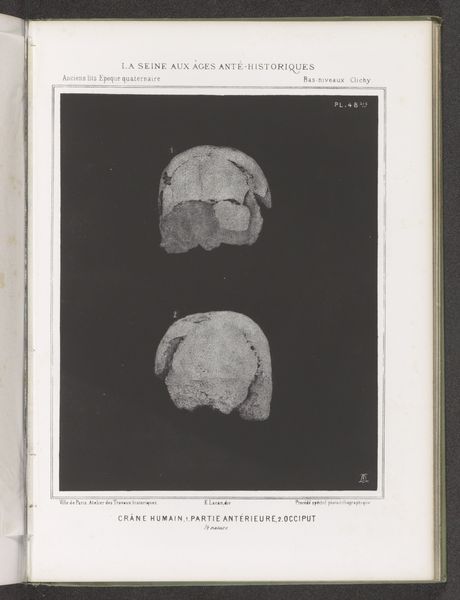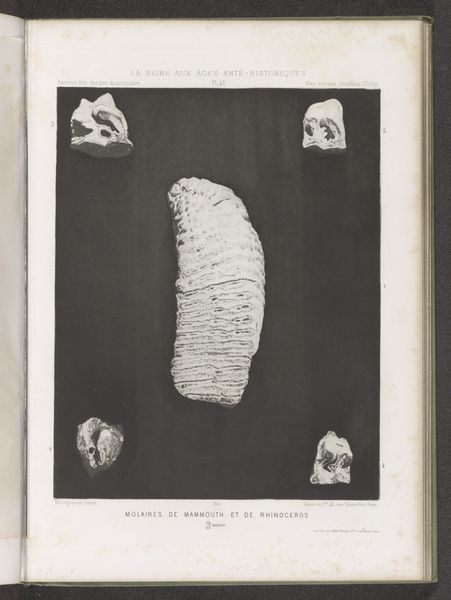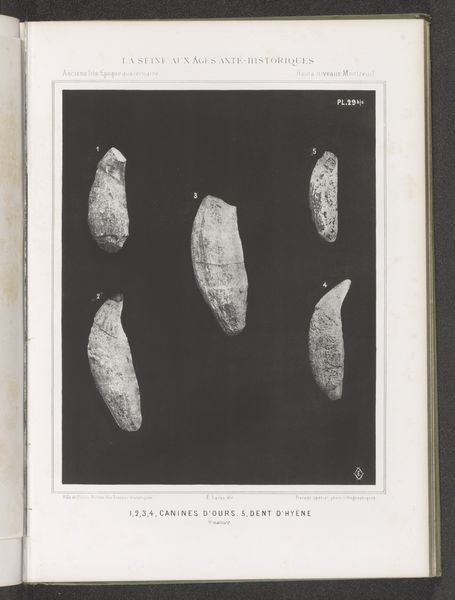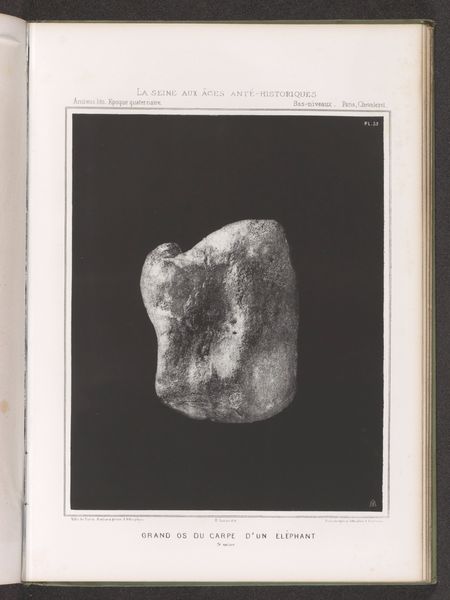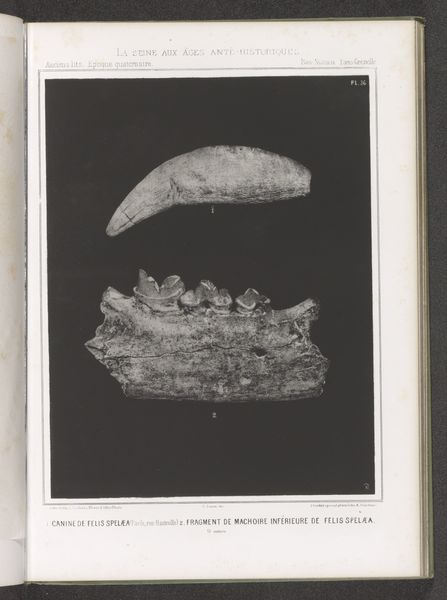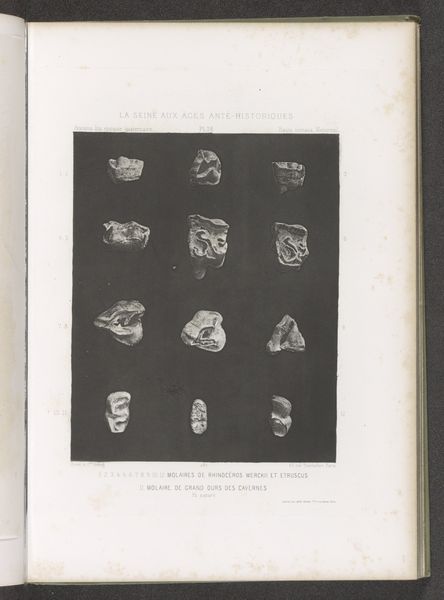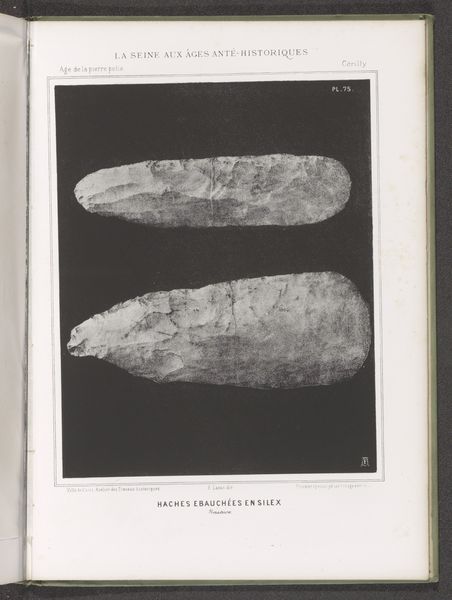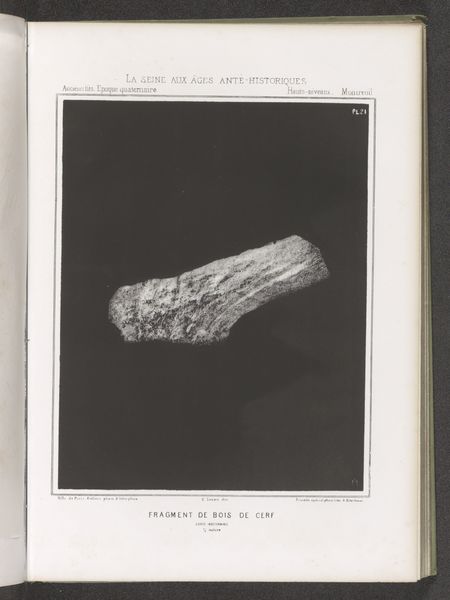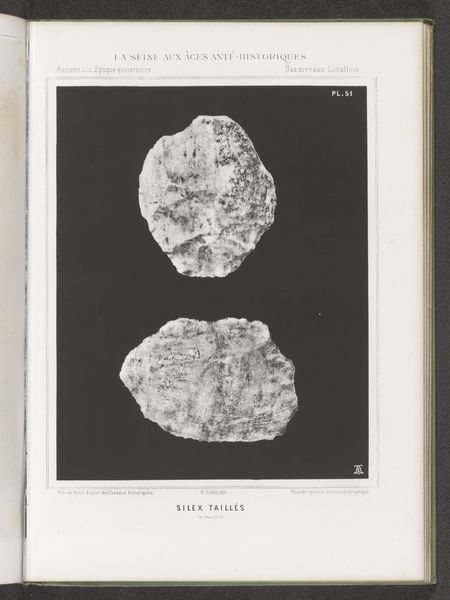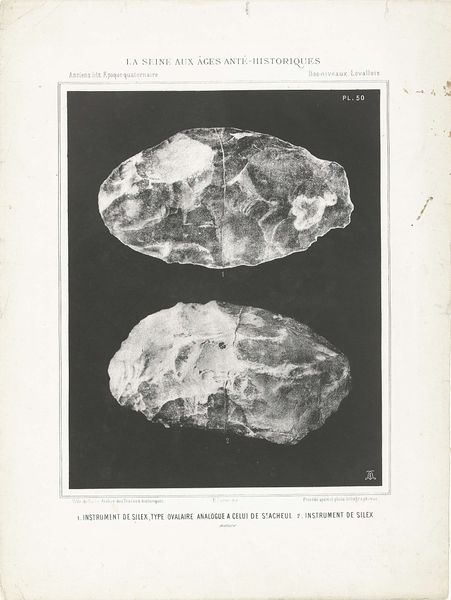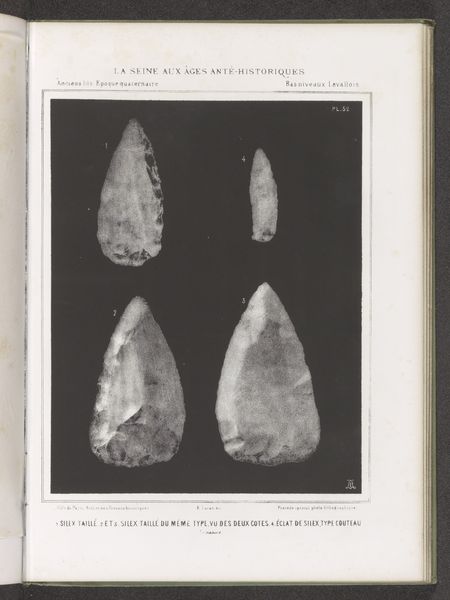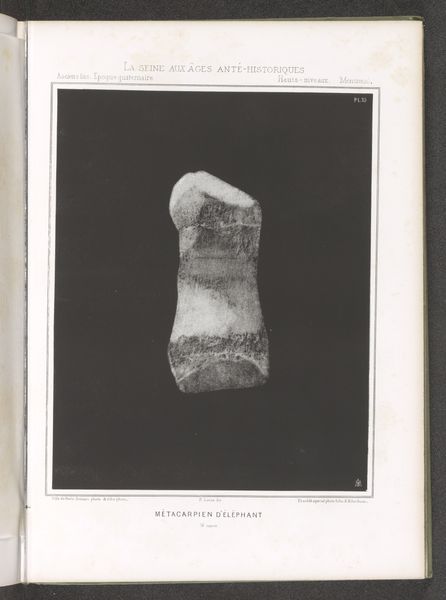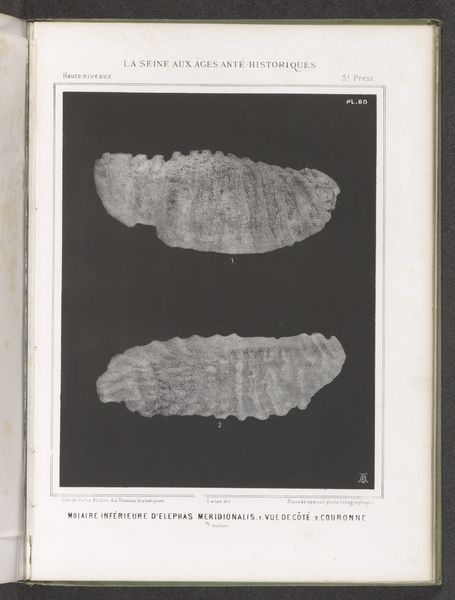
Twee prehistorische vuurstenen messen, gevonden in het stroomgebied van de Seine 1869
0:00
0:00
print, engraving
# print
#
ancient-mediterranean
#
line
#
prehistoric
#
academic-art
#
engraving
#
realism
Dimensions: height 240 mm, width 189 mm, height 362 mm, width 275 mm
Copyright: Rijks Museum: Open Domain
These prehistoric flint knives were found near the Seine, and made by an anonymous craftsperson, using a reductive process of knapping, or striking one stone against another. The material here is everything. Flint's inherent hardness and ability to fracture predictably made it ideal for creating sharp edges. These edges would have been essential for various tasks, from butchering animals to preparing hides. You can see how the maker skillfully exploited the stone's properties to achieve the desired form and function. The tools involved were simple, yet effective, demanding precision and knowledge of the material. Thinking about these knives reminds us of the ingenuity of early humans, and their intimate relationship with the natural world. It also challenges our notions of what constitutes art, prompting us to recognize the artistry inherent in even the most utilitarian objects. Here, the skill lies in the act of making, and the deep understanding of the material at hand.
Comments
No comments
Be the first to comment and join the conversation on the ultimate creative platform.
